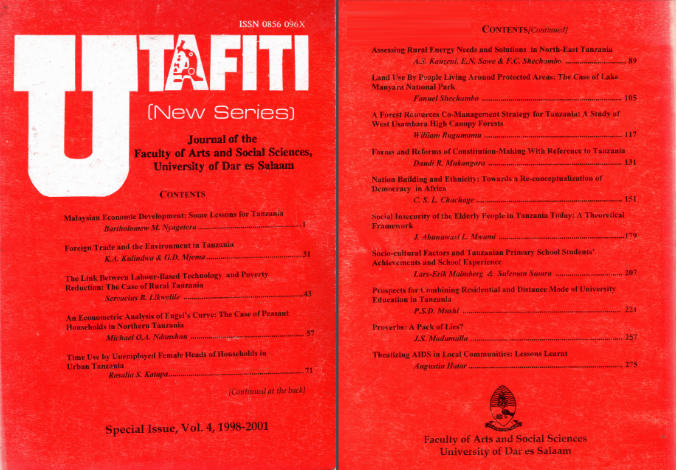Malaysian Economic Development: some Lessons for Tanzania
Abstract
Malaysia achieved independence in 1975, but remained a typical underdeveloped country until 1970, with low rates of economic growth, high incidence of poverty and continued dependence on the rural sector, agriculture and mineral extraction. The race riots of May 169 awakened the government to the need for major reforms and social and economic transformation to push the majority of the population into the mainstream of the economy, and achieve a more equitable distribution of wealth. As a consequence, the government implemented various strategies and programs, namely, the New Economic Policy, the National Development Policy, Vision 2020 and the Multimedia Super Corridor. The government also implemented the Nationals Economic Recovery Plan in response to the Asian Storm. These various measures have assured for Malaysia high GDP growth rates, and major social and economic transformation which have enabled it to join the group of upper middle income economies from the low income group of countries where it had remained until the 190s. While Tanzania continues to languish in the group of low income counties since the 1960s, Malaysia shows all the promise of achieving fully developed nation status by the year 2020. Thus the Malaysian development experience widens the scope of lessons available to Tanzania and other developing Third World nation to achieve prosperity and economic development as well as eradicated poverty within the space of single general.Downloads
Published
2018-02-23
Issue
Section
Articles



